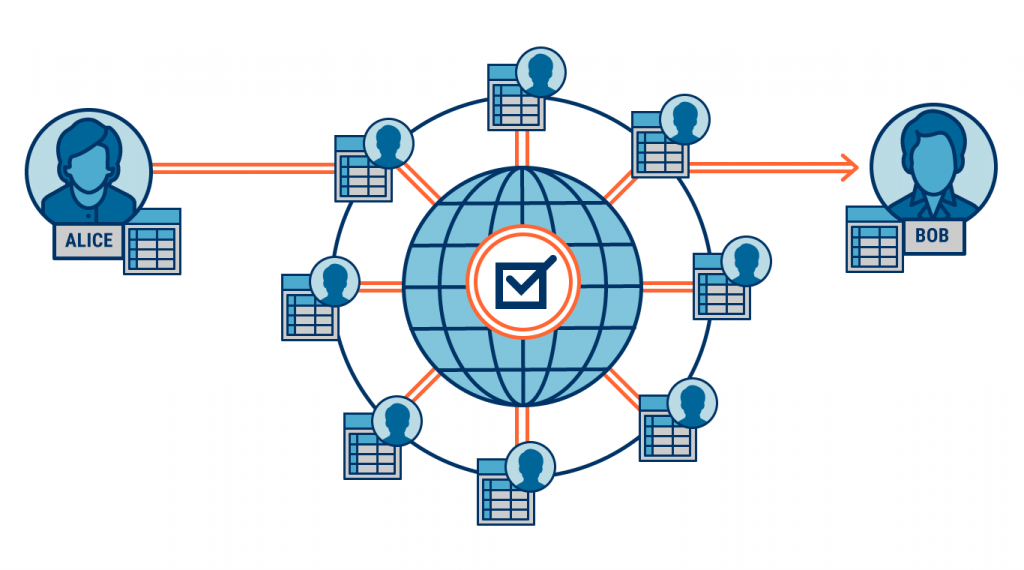
In the summer of 2019, there were around 1800 cryptocurrencies in the world with Bitcoin and Ethereum remaining the most popular ones. However, new promising tokens keep appearing in the market. So what is a cryptocurrency and how is it used today?
What is a cryptocurrency?

Cryptocurrency is digital money that does not have a fiat analogue. Cryptocurrency differs from other electronic currencies by the fact it’s protected and encrypted using special cryptographic algorithms. The main distinction of cryptocurrency is decentralization, independence from a single operations center.
Not a single bank, not a single state agency, or private organization can manage cryptocurrencies and influence transactions carried out inside the system, as data about processes is stored on a variety of devices. It is impossible to counterfeit or change such information by the decision of one person, meaning that cryptocurrency is secure against fraudsters.
All these features are enabled by the blockchain technology, the work principles of which the cryptocurrency relies on. Blockchain is a distributed network with nodes independent of one center and forming an autonomous system for data storage.
All devices that join the chain get a file with all data that has been ever recorded in that network. Stored information forms blocks available for public view and unchangeable.
How does the cryptocurrency function?

Let’s review the principle of appearance and work of cryptocurrencies through the example of Bitcoin. The author of the most popular cryptocurrency is considered to be Satoshi Nakamoto, who may be either one person or a group of people. Satoshi presented the concept of the new payment system, which provides anonymity for users, a high level of protection and autonomy, in 2008.
How does the cryptocurrency function? The Bitcoin network is based on blockchain and consists of transactions united into the chain of blocks. Each block contains data about previous blocks and this is how the whole system is united into a network and provides data integrity inside it. Data about transactions and actions in the network is anonymized, which ensures anonymity of cryptocurrency holders.
The creation of new blocks and recording of information there takes place thanks to the technical capacities of system participants – the process is called mining. Users that participate in the formation and generation of new blocks get a reward for this in the form of cryptocurrency. It is impossible to generate blocks and new Bitcoins endlessly, as the limit of 21 million coins was set.
Features of cryptocurrencies
Cryptocurrency is a new type of digital money that came into use some time ago and is actively used for making electronic payments. What characteristics does such a digital currency have?
-
Adaptive scaling. Cryptocurrencies use a number of rules that ensure their optimal functioning in different scales. For example, the Bitcoin mining algorithm is corrected depending on the number of blocks mined within a certain time. It is stipulated that upon certain conditions, the time of offer is restricted, and the mining reward is reduced (when mining grows in volumes significantly).
-
Cryptography. Cryptocurrencies use a special data encryption system thanks to which you can control the number of generated coins and carry out transactions upon exchange operations and settlements.
-
Decentralization. Fiat money is developed by certain institutions and fiat systems are controlled by a single center. Cryptocurrencies rely on peer-to-peer networks, which exclude the possibility of influencing the chain of blocks from one point.
-
Digital character. Cryptocurrency does not exist in a physical form and is solely digital. Yes, you can exchange cryptocurrency for goods or other types of money (Dollars, Euros, or WebMoney), but the digital currency itself exists only online.
-
Proof of work. Most of the cryptocurrencies use the proof of work mechanism. It is a formula, a kind of captcha, the confirmation of which requires certain computing power.
-
Anonymity. Cryptocurrency wallets are encrypted, and owners get access to them through special identifiers that are not connected to the identity or real personal data. Transaction information is publicly available, but data is anonymized and does not lead to cryptocurrency owners.
-
Price. The cryptocurrency cost is defined by the amount of work that has to be done in order to mine tokens, deficiency, and demand for coins can change the price. This mechanism of price determination is called proof of work. Besides, there is a proof of stake concept that relies on the number of coins owned by the miner.
Where is cryptocurrency used and why is it needed

Despite the digital character of cryptocurrencies, you can buy ordinary material assets and pay for services with them. For example, a purchase and sale contract for a flat involving cryptocurrency was first signed in Ukraine in 2017. Apart from the obvious and direct application of digital money, there are several more options for its use.
Anonymous payments. Some cryptocurrencies in the market ensure the ultimate anonymity of users that send payments. They are Monero, Zcash, and PIVX. They allow transferring large sums without any problems and hurdles from banks or authorities.
Low-cost money transfers. Cryptocurrency transactions are run directly without the engagement of third parties, meaning that they do not involve high commission fees (taken by ordinary payment systems). It allows making payments at minimum cost, and what is more important, almost instantly.
For example, Ripple platform (XRP cryptocurrency) developed a unique technology that allows making international transactions at high speed. The user of the Litecoin network made a $100 million transfer in 2018, which took just 2.5 minutes and cost $0.4 (in the case of fiat money, the whole process would take several days).
A way to store funds. It is almost impossible to freeze or block cryptocurrency accounts from outside, so cryptocurrencies can become a good option for storing assets today. Especially this relates to countries with extremely unstable economic status and low trust in bank systems.
Investments in startups. Arrival and adoption of cryptocurrencies allowed startups to raise funds for projects easier and quicker. On the other hand, digital currencies opened an opportunity for many people to invest in promising ideas: everyone can do it using cryptocurrencies. Usually, the process takes place through an ICO – a fundraising technique, where the project attracts investments and sells specially developed digital tokens to volunteers.
Earning money on trading. The principle of making a profit is simple: one trades at a special exchange, buys cheap and sells more expensively in time.
Online payment method. Cryptocurrency transactions are performed at high speed and stand out for minimum fees, which makes them an ideal means for online settlements. This relates to online stores, gambling, and other resources, where quick and reliable way of depositing and withdrawal is important.
Where to take cryptocurrency
Mining is one of the options to generate cryptocurrencies. Mining of virtual coins uses the computation power of your equipment. In 2019, mining requires good hardware and special software that cost a lot. What can newbies do with it?
-
Use cryptocurrency faucets. They are special resources where you can earn coins for clicks, decryption of captcha images, visiting websites.
-
Buy Bitcoins at marketplaces. A simple but extremely unprofitable way to get cryptocurrency. You buy cryptocurrency through intermediaries, which implies high fees.
-
Buy directly. A rather lucrative option at first thought but the riskiest one. When you buy cryptocurrency from anonymous users, it is simple to face fraudsters.
-
Buy at exchanges. Using exchange services is relatively safe if the platform is reliable and trusted, with a good name in the market.



